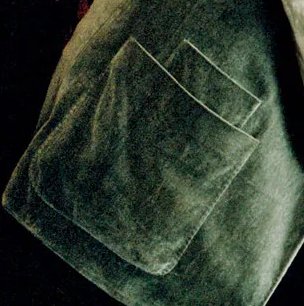views
Fred Rogers is rightly celebrated for his style, but less well-recognized are the reasons why his style worked so well over the years. 🧵
https://twitter.com/historyinmemes/status/1770877283081023865
Rogers is most known for his cardigans, but his attire on the show was actually composed of tailoring (suits, sport coats, and blazers), which he wore when he arrived "home." He then took that off and changed into a cardigan to signal he had "gotten home from work."




When the show was first broadcast in 1968, Rogers wore suits that were popular during that era: American-styled tailoring with no front dart and slightly narrower lapels. It's a look Brooks Brothers made famous. It's also called Ivy Style for its connection to elite US colleges




However, for the majority of his life (and time on the show), Rogers wore tailoring in much more moderate proportions: lapels that ended halfway from his collar to shoulder joint, shoulders that gave him some breadth, and trousers that were not too slim or baggy. 

In this screencap, you can see how his jacket's buttoning point is placed at his waist, the narrowest part of his torso (allowing for better waist suppression without going overboard). Pants are high-waisted. Lapels have a beautiful roll. Does the silhouette look familiar?




Rogers kept things looking interesting and not too corporate by making smart use of accessories: collar bars, tie clips, cufflinks, and pocket squares. (Notably, he's wearing over-the-calf socks here, sparing us the sight of bare calves that happens when mid-calf socks droop.)




He also had an eye for proportion. Even when he wore narrow lapel jackets (trendy in the late 1960s), he paired them with narrow ties. Your tie's width should always echo the width of your lapels. It sounds like a small thing, but things look off when there's a mismatch.




His collar bar—a metal bar inserted between the collar points—lifted up his ties, giving them a three-dimensional arch. This was a bit of a dandy move in the late 1960s, when the show first aired, and only became more so over time as such accessories became rarer.




Off the show, when he didn't wear a tie, he didn't just ditch the tie and wear a white dress shirt with a dark suit (like many men do today). Instead, he wore a more casual top, such as this turtleneck. Doesn't this look better?




Now, onto his cardigans. Rogers primarily wore two types of cardigans: a button-front in the early days and a zip-front that his mother made him. Putting on a cardigan, even at home, allowed him to layer, which created a more interesting look. 

He also zipped them up halfway to allow room for the mic, but this also allowed him to recreate the V-shaped section formed by a jacket, shirt, and tie. Notably, many of his zip-front cardigans were built with a ribbed neck. To me, they almost look like MA-1 bomber jackets.




Many here will already know that a great number of Rogers' cardigans were hand-knitted for him by his mom. Nancy McFeely Rogers made a new sweater every month and then handed all twelve out to loved ones during Christmas. Fred Rogers got the one with a zip front.
The show ran into a problem when Nancy passed away in 1981. Fred's cardigans were becoming threadbare, and zip-front cardigans weren't fashionable at the time, so they weren't readily available on the market. 

One day, the show's art director, Kathy Borland, chased down a postman wearing a similar knit and asked who made it. They sourced a bunch of these white cotton sweaters and dyed them different colors in an industrial pot. The fabric flanking the zip was colored with markers. 

Rogers also consistently wore Goodyear welted shoes with his tailoring and then changed out to sneakers when "at home." He explained that he wore sneakers bc he often had to run across the set. The sneakers were always blue canvas with white laces (Sperry Cloud CVO or Converse)




When you look through his intro over the decades, it's not just that he always comes home in tailoring and changes into a cardigan. It's that even the proportions of his clothes are remarkably consistent. Lapel width, notch height, and buttoning point are all the same.
Rogers later said that his routine of walking through the door, singing the same song, and wearing the same clothes helped set a tradition. "Tradition is something that makes people feel very comfortable; they know what to expect."
I don't mean that everyone has to dress in such a classic manner. Only that, there is something powerful about people who have developed a very strong sense of personal style. This can include a very broad scope of aesthetics. These men had the same look for decades:








That's made much easier if you pay attention to things such as fit, silhouette, and proportions. And if you dabble in trends, have a strong enough sense of personal style to still wear the thing even after the trend passes.
Rogers' style was great because he understood some very basic principles, which allowed him to create a consistent look that aged well over the 33 years the show aired. You can watch any episode today—some now over 55 years old—and say, "That guy looks great." Pretty awesome.




• • •
Missing some Tweet in this thread? You can try to
force a refresh

































